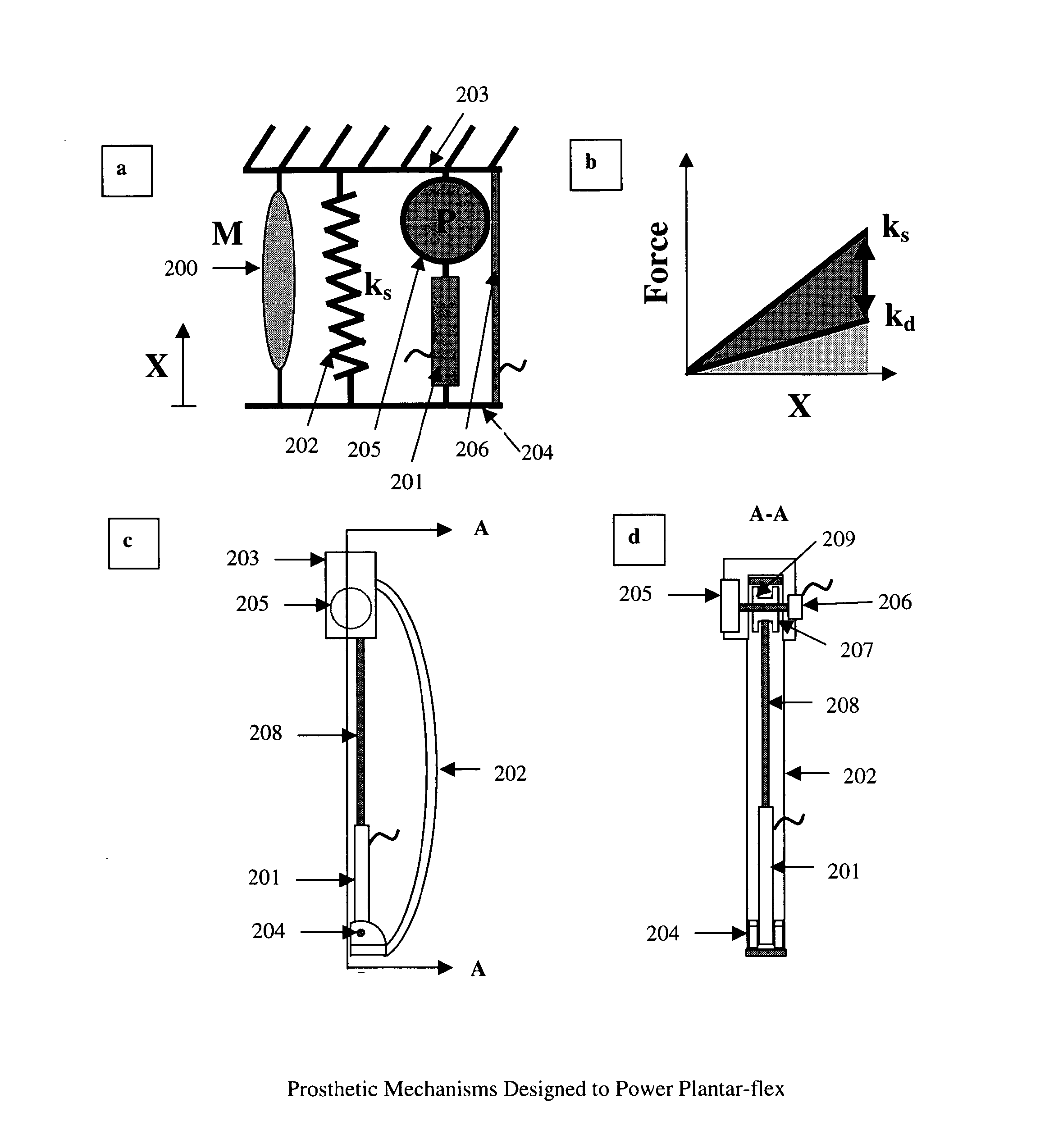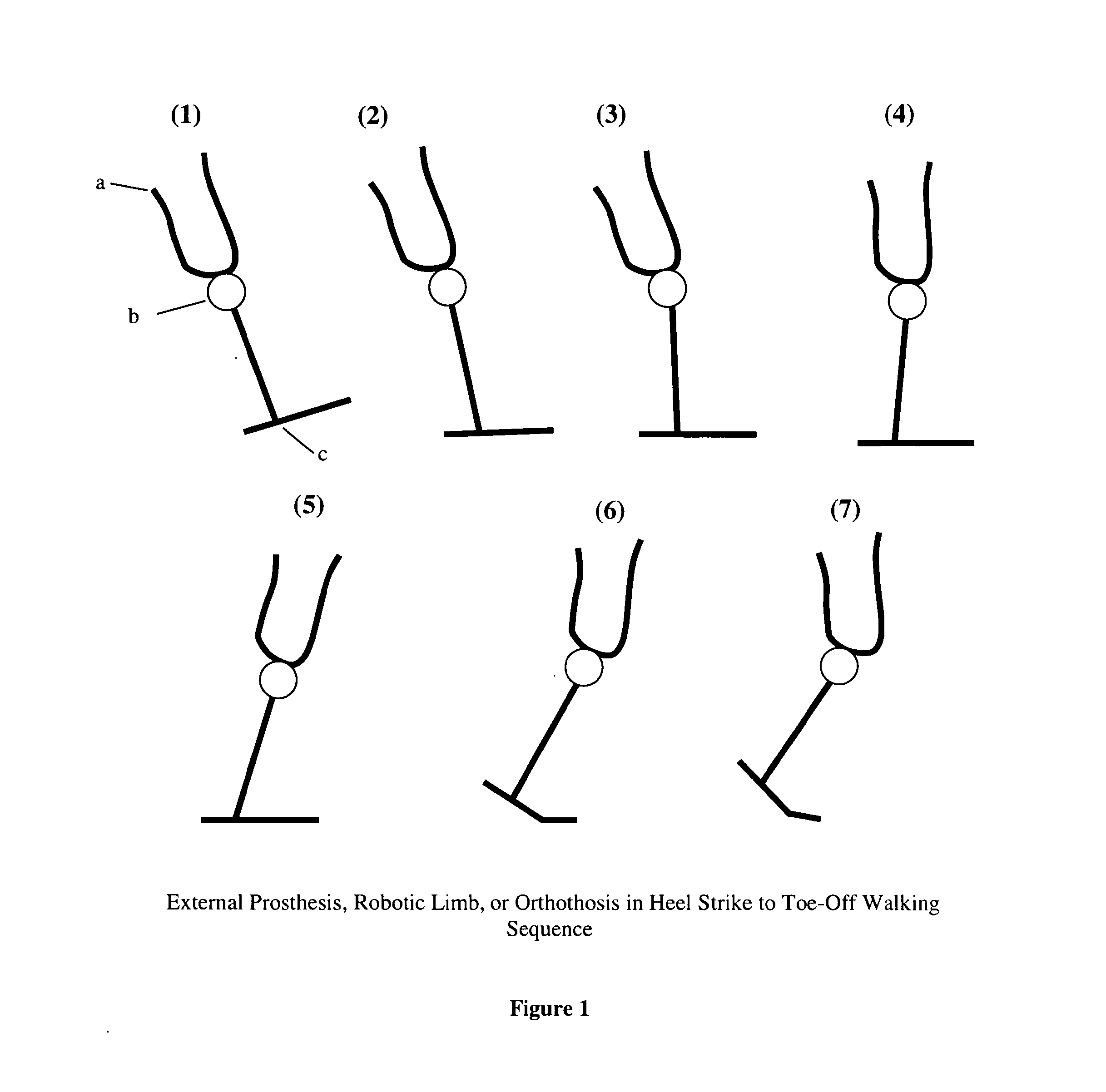Variable mechanical-impedance artificial legs
a mechanical parameter and artificial leg technology, applied in the field of robotics of the legs, orthotic leg devices, prosthetic leg joints, etc., can solve the problems of inability to restore normal levels of ankle powered plantar flexion, inability to achieve normal biological levels, and simple linear or non-linear spring action cannot adequately mimic a natural limb. achieve the effect of increasing the number of pneumatic springs in parallel and reducing power consumption
- Summary
- Abstract
- Description
- Claims
- Application Information
AI Technical Summary
Benefits of technology
Problems solved by technology
Method used
Image
Examples
Embodiment Construction
[0055]A powered-catapult embodiment of the present invention is shown in FIGS. 4a-4d. FIG. 4a is a lumped-element model of a powered-catapult prosthetic. The mounted end 203 of the prosthesis attaches to the body, and the distal end 204 of the prosthesis interfaces to the environment (such as the ground for a leg prosthesis). Mounted end 203 is coupled to distal end 204 through spring 202, and through the series combination of force actuator 205 and force sensor 201. In some embodiments, displacement sensor 206 may also be included in parallel with spring 202. If the system is designed to operate in parallel with an existing limb, the muscles of the existing limb are modeled by muscle 200.
[0056]A mechanical implementation of lumped-element diagram 4a is shown in side view in FIG. 4c and in front view in FIG. 4d. In a preferred embodiment, during the portion of a gait cycle when the foot is not in contact with the ground, motor 205 turns spool 209 to wind on some of tension band 208,...
PUM
 Login to View More
Login to View More Abstract
Description
Claims
Application Information
 Login to View More
Login to View More - R&D
- Intellectual Property
- Life Sciences
- Materials
- Tech Scout
- Unparalleled Data Quality
- Higher Quality Content
- 60% Fewer Hallucinations
Browse by: Latest US Patents, China's latest patents, Technical Efficacy Thesaurus, Application Domain, Technology Topic, Popular Technical Reports.
© 2025 PatSnap. All rights reserved.Legal|Privacy policy|Modern Slavery Act Transparency Statement|Sitemap|About US| Contact US: help@patsnap.com



